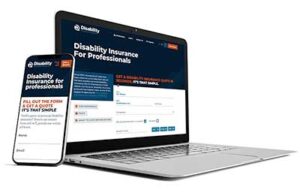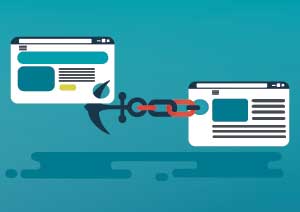Maintaining an ADA-compliant website helps businesses to avoid potential fines and lawsuits. The Americans with Disabilities Act (ADA) of 1990 requires specified businesses to make special accommodations for people with disabilities. These businesses must have websites that are accessible to deaf users, blind users and users who navigate the web with screen and voice readers or other assistive technologies.
View Our 2022 ADA Website Compliance Checklist
Steps To Ensuring An ADA Compliant Website In 2021
Title I of the ADA prohibits local and state governments, private companies, labor unions and hiring agencies from discriminating against qualified individuals with disabilities in all aspects of employment, including job application procedures, hiring, advancement, job training, compensation and advancement. Businesses that fall under Title I of the ADA include those that operate 20 or more weeks per year and have at least 15 full-time employees. Under Title III of the ADA, businesses that fall under the “public accommodation” category are also covered by the ADA.
Creating an ADA-compliant website involves a series of critical steps that are required to meet to achieve compliance for businesses that fall under Title I or Title III of the ADA. In order to ensure your website is ADA compliant in 2021, follow the steps provided in our 2021 ADA website compliance checklist below.
Website Design & Presentation
 When creating a website that is ADA compliant in 2021, the primary consideration will be the overall website design and presentation.
When creating a website that is ADA compliant in 2021, the primary consideration will be the overall website design and presentation.
The layout of the website should not be too complex or busy; this could make it difficult for users to navigate to the desired content. Site visitors should also be able to adjust certain aspects of the website design to make the information easier to digest.
Website Structure: Use Proper Markup Techniques
Website structure is an important component of presentation. Proper markup techniques should be used to structure the website content. For example, the correct heading tags and HTML should be used when creating ordered and unordered lists.
Color & Audio
Create a color contrast ratio of at least 4.5:1 between the background and text but do not use color alone as a way to convey information. Any audio published on the page must have the ability to be muted, paused or stopped. Autoplay for audio and video is not permitted.
Parsing & Errors
All HTML code must be clean and free of errors, for example missing bracket closes. It can be difficult to navigate a website that has errors in HTML, error pages or broken links. HTML elements should also be properly nested.
Forms, Labels & Instructions
Forms can be challenging to understand for individuals with screen readers. Forms should be clear and use standard formats for names, addresses and other information. Form labels and instructions should also be programmed in a way that the format is expected to be written by the average user.
User Access, Control & Navigation
 Implementing certain features for visitors of the site should provide an element of control over their experience. Allow users to pause content that refreshes or updates and enable a warning before expiring time limits.
Implementing certain features for visitors of the site should provide an element of control over their experience. Allow users to pause content that refreshes or updates and enable a warning before expiring time limits.
Do not use automatic pop-ups for special offers or subscriptions; however, popups offering assistance are reasonable. No elements on the website can unexpectedly change, instead, use soft transitions.
Keyboard Only & Keyboard Trap
ADA-compliant websites must be usable with the keyboard alone. The website should support complete keyboard navigation and allow individuals that cannot use a computer mouse to use a specialized keyboard to navigate the site. The website cannot contain a keyboard trap; keyboard-only users should never get stuck on any part of the website. Visitors should be able to navigate both forwards and backwards with a keyboard.
Navigation Links & Consistency
Place a “Skip Navigation” or “Skip to Content” link to allow visitors to bypass headings and go straight to the content. The navigation layout should be consistent throughout the website pages. For example, the same list of links on each page of the website should remain in the same order.
Search Bars, Sitemaps & Breadcrumbs
Provide users with multiple ways to access different pages or information on the website, such as navigation menus, search bars, breadcrumbs or sitemaps. A link to the sitemap must also be provided on the homepage; ideally, it should be on every page of the website in the footer.
Alternatives & Descriptions
 There are several ADA-compliance requirements that websites must meet with regard to alternative content. Never use images of text as a replacement for text. Exceptions include branding, logos, charts with labels and infographics.
There are several ADA-compliance requirements that websites must meet with regard to alternative content. Never use images of text as a replacement for text. Exceptions include branding, logos, charts with labels and infographics.
Infographics and charts must also have a descriptive caption that connects the info in the image to the alt text. Individuals who use text reader software can read the description of images to better understand the content.
Alt Text
Each image on an ADA-compliant website must have a descriptive alt text. This includes all infographics, charts and logos. The value of the alt text must be modified to convey the meaning of the image.
Video & Audio Alternatives
If the website contains media such as video or audio, it must provide an alternative method for making this content accessible to those who may be hearing or visually impaired. This may include video and audio transcriptions that can be read using screen reading assistive technology. Captions should be available in videos with sound to allow users to read the content instead of listen.
Audio Descriptions
If a website contains audio it must also have a text transcript or live text on the page. The text transcript must be clear and complete and make it easy for visitors to understand the audio. Transcripts should always be clearly labeled and linked directly below the media. Audio descriptions are optimal under 1.2.3 level A, but not under 1.2.5 AA.
Live Captions & Closed Captioning
Every video that contains discernible sounds and voices requires the use of synced closed captioning. Live captions should be placed in videos with sounds to allow deaf individuals to read along with the video.
Language, Titles & Text
 The default language of an ADA-compliant website should be easy to determine by any accessibility software. If a website contains abbreviated or uncommon words, there should be explanations or a way that users can gain an understanding of the meaning.
The default language of an ADA-compliant website should be easy to determine by any accessibility software. If a website contains abbreviated or uncommon words, there should be explanations or a way that users can gain an understanding of the meaning.
Each page of a website should have titles and heading that describe the topic or purpose of the content. This makes it easier for users to determine where they are on a website.
Descriptive Page Titles
Each page of a website should contain a descriptive page title that provides a clear understanding of what the content is about. This allows visitors to confirm that the page is likely to contain information that meets their search inquiry.
Sequential Order Of Content
Visitors must be able to navigate a website in a logical sequential order. The purpose of having a sequential order of content is to preserve meaning and avoid confusing users. Sequential navigation makes it easy for users to move between different pages of a website.
Anchor Text
The purpose of each link on a website should be clear based on its anchor text. For example, an ADA-website complaint website should not have a link that simply says “Click here.” Instead, a descriptive anchor should be relevant to the content and provide value, such as “Our services” or “Contact information.” There are several different types of anchor text, such as title links, exact URL links, branded links, keyword links and generic links.
Website Language & Language Changes
Set the language for a website and always indicate any language changes within the content or for an entire page. The default language for a website should accommodate the majority of readers who are expected to use the website. The website’s language should be identified in the header code.
This makes it clear for people who use text readers in what language the site should be read. A text reader can then identify the code and function accordingly. For a multi-language website that consists of English, German and French pages, the primary language must be reset for each language.
Text Resizing
The ADA has established rules in regard to text resizing. Text can also be resized up to 200 percent of its original size. In addition, the text must still be readable once enlarged. Text resizing functionalities should not negatively impact a user’s ability to easily read the content or use functions.
Focus Indicator
A “user interface control” that gets focus from a keyboard user should always indicate that focus on the selected element that is being focused on. For example, adding a border that is visible around a text link that the user has used a keyboard to navigate to. A focus indicator box shows all fields and links and makes it easy for keyboard users to easily determine where they are on a page and how to navigate to a different page or section of the page.
Reach Out To An Experienced Custom Software Development Team
Creating a website that meets the unique requirements and regulations established by the Americans with Disabilities Act can help a website reach a wider audience and meet the needs of their visitors.
An estimated 466 million people, or more than 5 percent of the population, has disabling hearing loss, according to the World Health Organization. Another one billion have some level of vision impairment or blindness. For these individuals and many others with disabilities, accessing information on a website can often be challenging.
Ensuring that a website is fully compliant with ADA standards can be a difficult endeavor but is critical for any company that does business via the internet. To learn more about ADA website compliance in 2021, reach out to the experienced custom software development team at Orases by calling 301.756.5527 or by requesting a consultation online.




